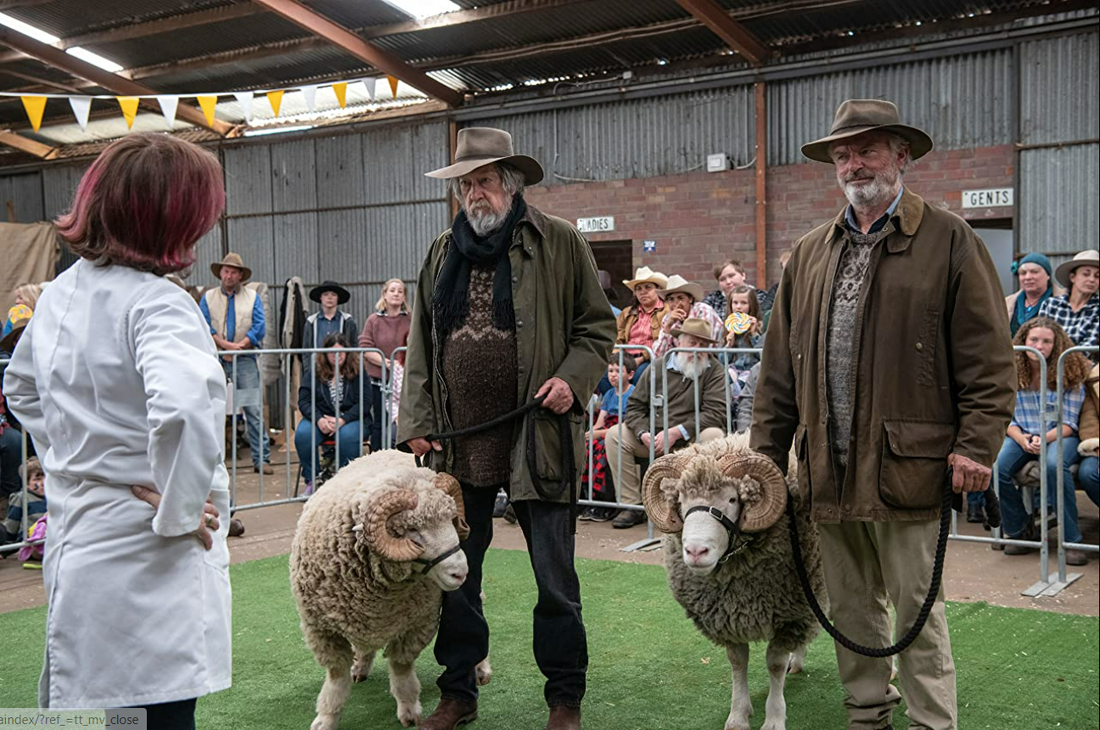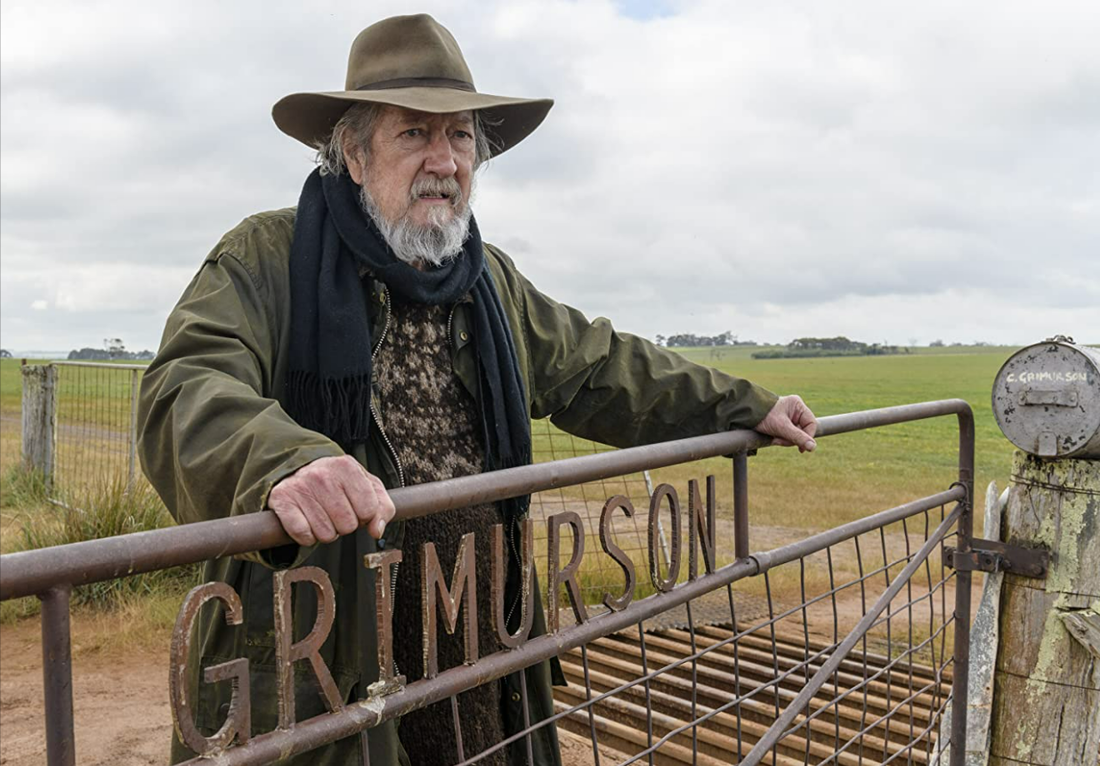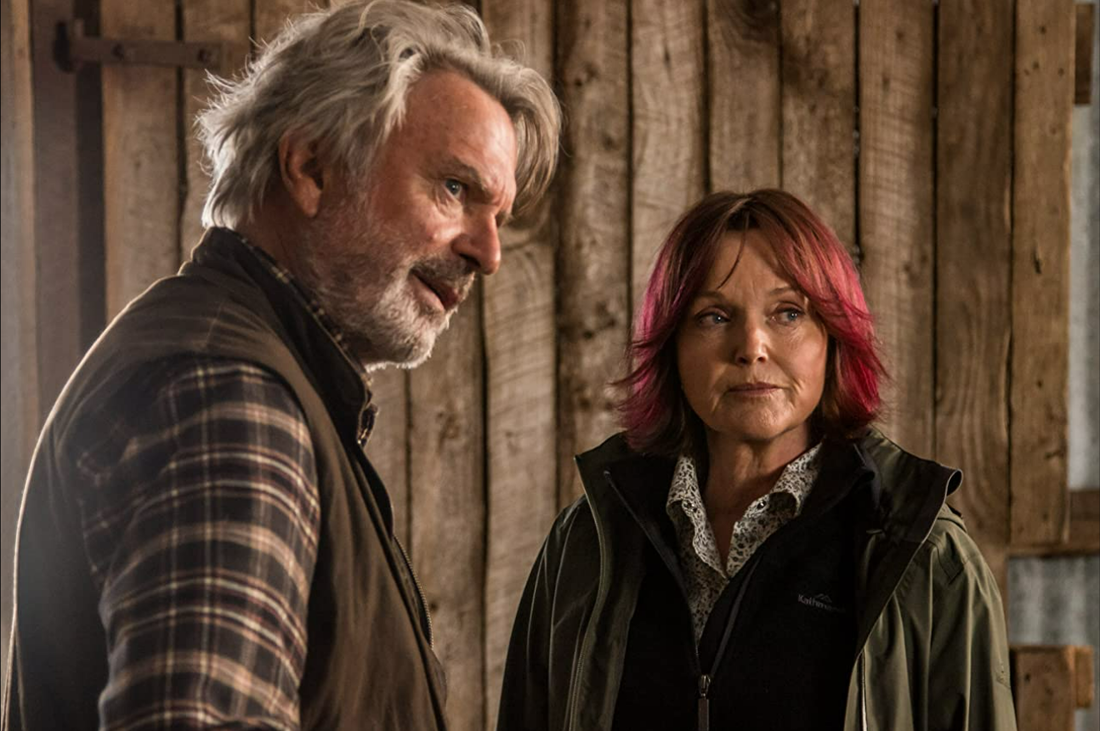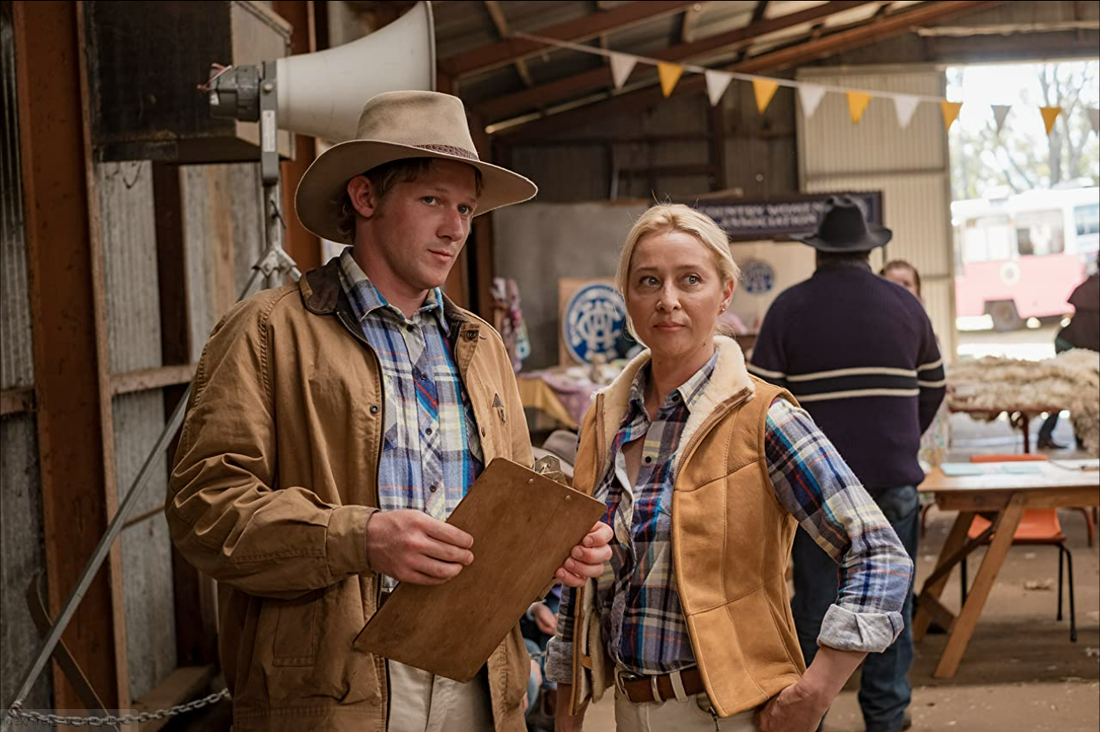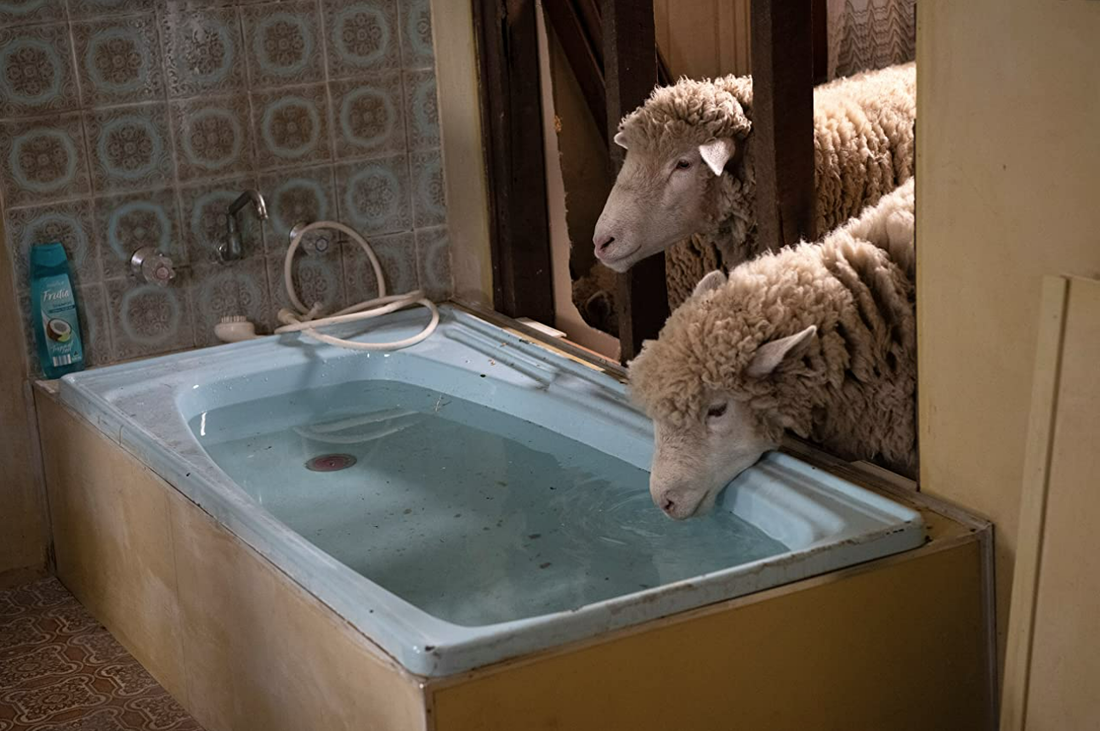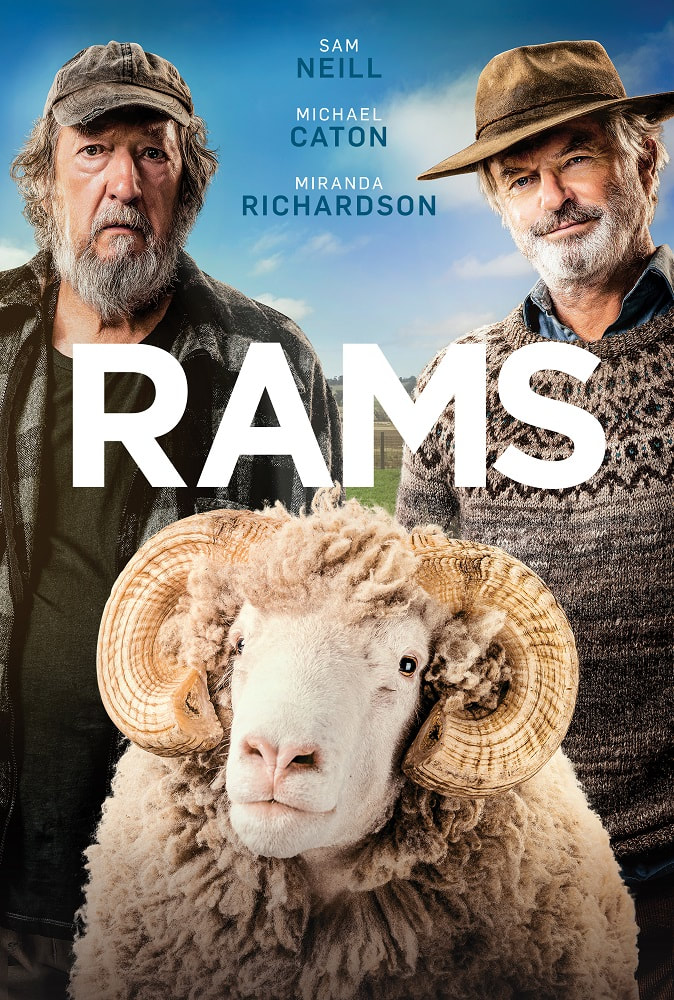|
Originally published on Elements of Madness Director Jeremy Sims brings together the talents of Sam Neill, Michael Caton, and Miranda Richardson in Rams, his English-language remake of the 2015 Icelandic film, Hrútar. Rams centers around feuding brothers Colin and Les Grimurson (Neill and Caton, respectively), who have been engaged in a silent-treatment standoff for decades as they keep separate flocks of sheep on opposite sides of their family land. After Les wins the local ram judging contest, Colin and the local vet, Kat (Richardson), make a life-altering discovery. Les’s prize-winning ram is infected with Ovine Johne’s disease, a deadly bacterial disease that could easily wipe out all the local herds. The community’s agricultural department orders all farmers in the area to eliminate their flocks and undergo extreme decontamination procedures, effectively destroying the town’s main source of income. While Les responds by lashing out in drunken rages, Colin devises a secret plan to hold on to his family’s specially bred sheep for a little while longer. At the risk of losing the things they love most, Colin and Les must figure out how to reconcile their differences in the face of unexpected changes and grief. To start with the obvious, Rams hits much differently as a late 2020/early 2021 release than it would have as a 2015 release, like Hrútar. The movie’s images of foreboding scientists in hazmat suits performing deep disinfecting procedures will probably affect Rams‘s post-2020 audience on a pretty personal level. On one hand, the timing of Rams’s release works to its advantage. The average movie-goer might not easily relate to the lifestyle and struggles of Colin and Les as they raise and breed sheep, but, at this point, we all understand the impacts of a sudden outbreak of deadly illness. In this way, Rams’s initial audience comes with built-in empathy for the characters’ problems. On the other hand, the film’s villainization of the authorities who must enforce safety guidelines and decontamination procedures is a bit tone deaf in the present moment. The movie’s obvious villain is the ominous local agricultural department, represented by the painfully clueless De Vries (Leon Ford). De Vries embodies the hyperbolic city-boy archetype who often shows up in Hallmark original movies. He’s money-hungry, arrogant, and much more interested in ruthlessly enforcing rules than in actually stopping the spread of the disease. He clearly knows nothing about animal care despite his position with the department of agriculture, and he takes inexplicable personal delight in watching Les and Colin lose everything. As frontline workers, scientists, and local officials struggle to get people to take COVID-19 seriously, this villainization in Rams just doesn’t sit right. It doesn’t appear that Rams is trying to be a COVID-era metaphor or satire, but it’s difficult to watch the film without thinking about current issues. Even outside of the unintentional connections to current events, Rams’s villain is one of the weaker elements of the film. De Vries is an overexaggerated animal-hating corporate stiff with little to no nuance. While Colin and Les are more complex characters who are interesting to watch, the stock villain cheapens their conflicts. In addition to the problems with De Vries, there are a few plot points and scenes scattered throughout Rams that rely on formulaic storytelling and make cheap attempts to appeal to the audience’s emotions. These moments give Rams an overly bright tone, similar to that of a typical family movie, and create the feeling that a happy ending is inevitable (although, it should be noted that despite this tone, Rams is not necessarily a family movie. It includes some sexual humor and explores the sad reality of alcoholism). Rams eventually settles on a much more genuine and satisfying tone, but it definitely takes its time getting there. Rams certainly couldn’t get to that more genuine point without its terrific cast, who at times seem almost too good for their roles. It goes without saying that Neill, Caton, and Richardson create complex characters with effortless ease, grounding the film with some believability as the film struggles to strike the right tone. Neill and Caton effortlessly shift between Rams’s comedic and serious moments, allowing moments of laugh-out-loud brotherly tension to melt unexpectedly into moments of profound sadness that highlight the deeper issues at play (mainly Les’s drinking problem, which is clearly affecting his health and mental stability). These emotional dips and swoops give Rams a pleasant sort of bittersweet humor that eventually comes to define the film’s style. Rams’s technical aspects also help to keep things stable by creating a strong aesthetic background on which the story unfolds. Antony Partos provides a delightful, memorable, and mood-setting score that brings several key scenes to life. The music is not necessarily cohesive, ranging from western twang to an almost minimalist piano, but the score works well in each individual scene. Steve Arnold’s cinematography sets a warm tone as it captures both the rural landscape with its vibrant, crystal clear texture and the cozy interior of Colin’s simplistic bachelor home. Despite a few awkward hiccups in the script, Rams gives us a lot to look at and enjoy, delivering the sincere storytelling that we’d expect from its recognizable cast. Available now on VOD
0 Comments
Leave a Reply. |
"Our embodied spectator, possibly perverse in her fantasies and diverse in her experience, possesses agency...finally, she must now be held accountable for it." Categories
All
|

